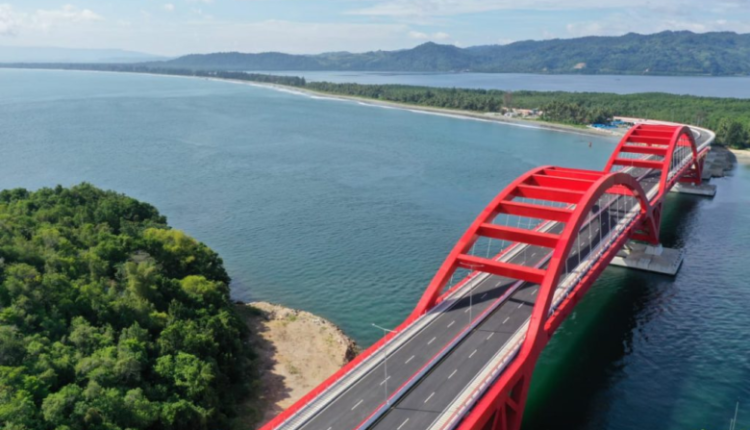Papua Development Concrete Evidence of the Government Creating Community Welfare
By: Devaryo Valarie )*
The government continues to intensify development in Papua in various sectors to this day. This commitment is clear evidence that the government is very serious about creating prosperity for the Papuan people. The central and regional governments are synergizing with each other to make Papua more advanced with physical and non-physical development. The government strives to provide optimal public services to all Papuan people so that they can live comfortably and prosperously on the Earth of Cenderawasih.
One of the efforts made by the government for the development of Papua is the Master Plan for the Acceleration of Papua Development (RIPPP) and the Information System for the Acceleration of Papua Development (SIPPP). RIPPP is an integrated plan between sectors and regions that prioritizes the principles of good financial management, which was prepared jointly with Ministries/Agencies (K/L), Regional Government, and Papuan community leaders who prioritize the principles of good financial management. Meanwhile SIPPP is an integrated information system platform within the RIPPP framework.
Minister of National Development Planning/Head of the National Development Planning Agency, Suharso Monoarfa, said the launch of RIPPP 2022–2041 and SIPPP was an important stage in Papua’s development. With the launch of this document, the government is introducing the long-term development direction of the Papua region. He hopes that this will be an important moment in encouraging synchronization and harmonization of planning and budgeting, collaboration between the central government, regional governments and other development actors in accelerating the development of the Papua region.
Suharso Monoarfa also explained that the government had decided to prioritize a welfare approach in the development acceleration program in the Land of Papua which will begin rolling out in 2024. The welfare approach for the Papuan people is carried out in stages, covering the education, health and so on sectors. The security approach is also given special attention, because it is to ensure peace in Papua. Meanwhile, the Central Papua Provincial Government is targeting the construction of a type B government hospital in Nabire Regency, in order to improve health services for people in the local area.
Head of the Population Control and Family Planning Health Service for Central Papua Province, dr. Silwanus Sumule said that in order to run a comprehensive health service that is carried out entirely in Central Papua Province, a provincial referral hospital is needed, the type of which is a Type B Hospital. This is in accordance with the demands of the 2022-2041 RIPPP which carries the big vision of realizing an Independent, Fair, Papua. and Prosperous. As an effort to create a Healthy Papua, the Central Papua Provincial Government is building a Type B Hospital.
According to Silwanus, health is the foundation, you cannot talk about Papua being smart and Papua being productive if Papua is not healthy. He explained that the basic philosophy that must be adhered to is that health is not everything, but without health everything is impossible. For this reason, the Central Papua Provincial Government is strengthening basic services through strengthening at the Community Health Center level and referral services by strengthening hospitals.
Based on the RIPPP regarding healthy Papua, in the not too distant future Central Papua will have a provincial referral hospital or what is called a Type B Hospital. The aim of accelerating the construction of the Type B Hospital is to cut the chain of referrals outside Central Papua Province.
It is hoped that with this hospital in the future, referrals from the districts can be completed in the capital of Central Papua Province without the need to refer patients out of Central Papua. Based on these considerations, it was decided that the Type B Referral Hospital in Central Papua could operate in 2026. The development that is very clearly visible and has direct benefits for the people of Papua is in the infrastructure sector. Much infrastructure development has been realized in Papua, such as roads, bridges and other public facilities. This is solely to bring services closer to the community, including opening up educational accessibility in frontier, outermost and marginalized (3T) areas.
Head of the Mimika Regency Regional Planning and Development Agency (Bappeda), Yohana Paliling, said that infrastructure is one of the supports for open access to education, health and the economy. Infrastructure, such as roads and bridges, needs to be opened to bring people closer to services provided by the government.
Roads and bridges are needed to provide accessibility links and make it easier for the government to reach the community. Education, health and the social economy must grow. For this reason, access must be opened so that it can reach the community. Yohana explained that the first development priority for Mimika Regency is increasing Human Resources (HR) who have competitiveness. To create competitive human resources, it is necessary to be supported by adequate infrastructure so that people in villages can also access good education. Infrastructure development really supports equal distribution of facilities and infrastructure in order to bring services closer to the community. If infrastructure is adequate and infrastructure is evenly distributed then the main priority of increasing competitive human resources will be achieved.
The various developments that have supported the lives of the people in Papua should be appreciated. Don’t let the results of the development be damaged or their function ignored. The Papuan people must maintain and make good use of the results of development to support their daily activities. Let’s guard development in Papua in a sustainable manner for the progress of the Earth of Cenderawasih.
)* The author is a student from Papua in Surabaya
